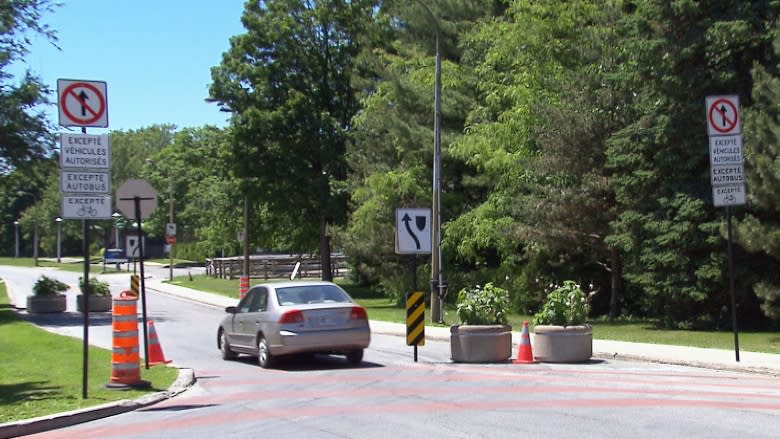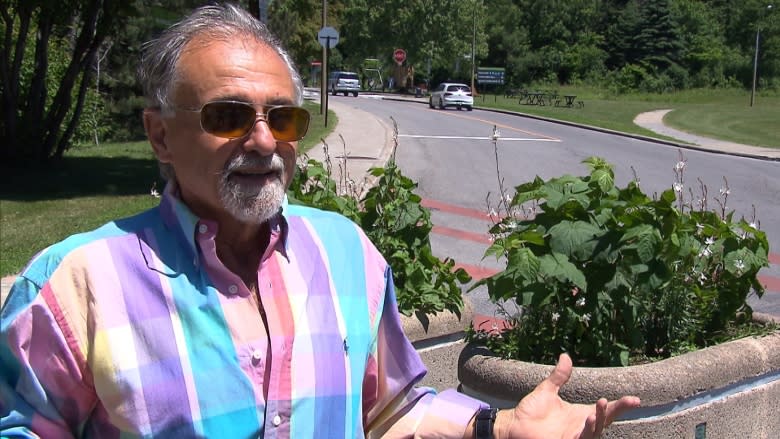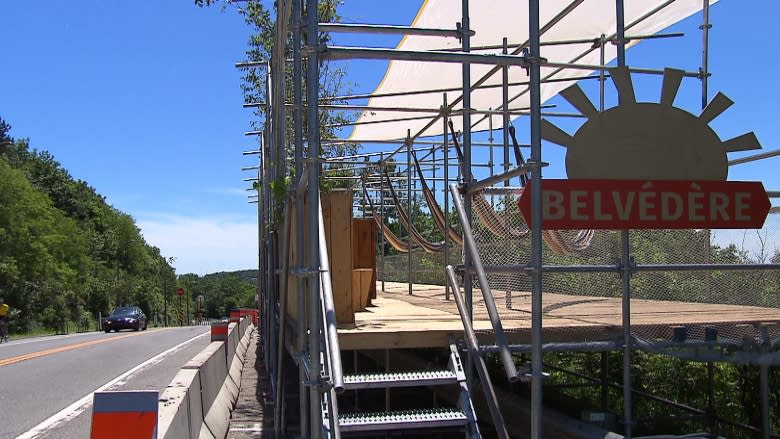Drivers continue to ignore, defy road-blocking pilot project on Mount Royal
It was a decision fraught with controversy and, now three weeks in, it's a pilot project that appears to still confuse some drivers, and provoke defiance in others
The city's plan to restrict the roadway coursing over Mount Royal has materialized in the form of large flower planters blocking one lane, curved red lines painted on the asphalt and signs with crossed-off arrows indicating only buses and bikes can pass.
But a recent trip CBC took to the mountain suggested only a portion of drivers are getting the message.
In the nearly two hours we spent there, CBC watched as driver after driver ignored signs and bypassed the planters.
José Martinez DiBona, a Montreal construction entrepreneur, recently did just that on his way home from dinner.
DiBona says he drove around the flower beds, thinking they were there to slow him down. He didn't realize the pilot project stopping cars from driving to the other side had begun.
"Suddenly we see traffic coming from the opposite direction — look, see they are all going through," DiBona said, interrupting himself as a white SUV followed a city bus into the restricted area.
DiBona ended up getting a ticket that night. A police officer had been waiting on the other side.
"He says, 'Look, you are the 200th person I stop tonight.' So, I mean, it's not us," said DiBona, who says he's against the project and was expecting more obvious signs directing drivers.
According to Montreal police Cmdr. Marie-Claude Dandenault, more than 250 people were issued tickets on the mountain in the pilot project's first two weeks.
The tickets were for all sorts of road infractions, including driving through the new restricted area, performing U-turns on Camillien-Houde Way, speeding and for cyclists going through stop signs.
At first, drivers weren't even looking at the signs, Dandenault says.
"We do see it getting better. Will it completely stop? I often make the parallel with bus lanes that have been around forever … and people are still going through them," she said, adding the signs have appeared to be especially confusing to tourists.
"No signals are 100 per cent. So we'll have to see, but we're definitely monitoring it week by week."
Dandenault said the city had already moved on police recommendations, including installing the planters and adding a pedestrian path to a temporary lookout on the side of the road.
That temporary lookout itself has caused some issues, according to the executive director of Les Amis de la Montagne, Hélène Panaïoti.
The lookout is a metal and wood structure with benches and hammocks set up by a clearing in the trees, with a view on the city.
Panaïoti said there has been quarrelling in the evening when people stop to watch the sun set. There is no where for cars to park, but some do it anyway, prompting outcries from passing cyclists.
Cars are allowed to stop on the road's shoulder, though they're technically not supposed to park, she said.
"But the room for interpretation between stop and park can be unclear," said Panaïoti.
The pilot project will last until October. In the meantime, Montreal's public consultation office (OCPM) is inviting citizens to share their feedback on the project.
The idea of limiting cars on Mount Royal had been floating around for years, namely by Plateau-Mont-Royal and Projet Montréal party member Luc Ferrandez.
But it was the death of 18-year-old cyclist Clément Ouimet, who was killed when a driver performed an illegal U-turn, that prompted Montreal Mayor Valérie Plante to announce the plan last spring.
Other measures have included reducing the speed limit on Camillien-Houde Way to 40 kilometres per hour as well as adding more signs warning cars not to perform U-turns.
One cyclist told CBC he was happy with the project despite some cars not respecting the rules because "it's not just a freeway from one side of the city to another anymore."
Another, though, said the measures taken by the city feel improvised.





